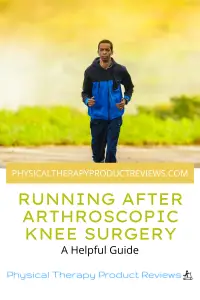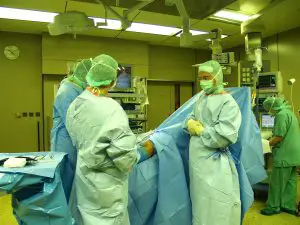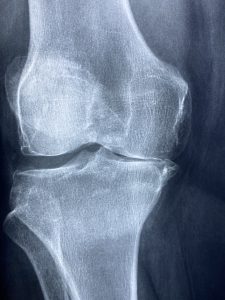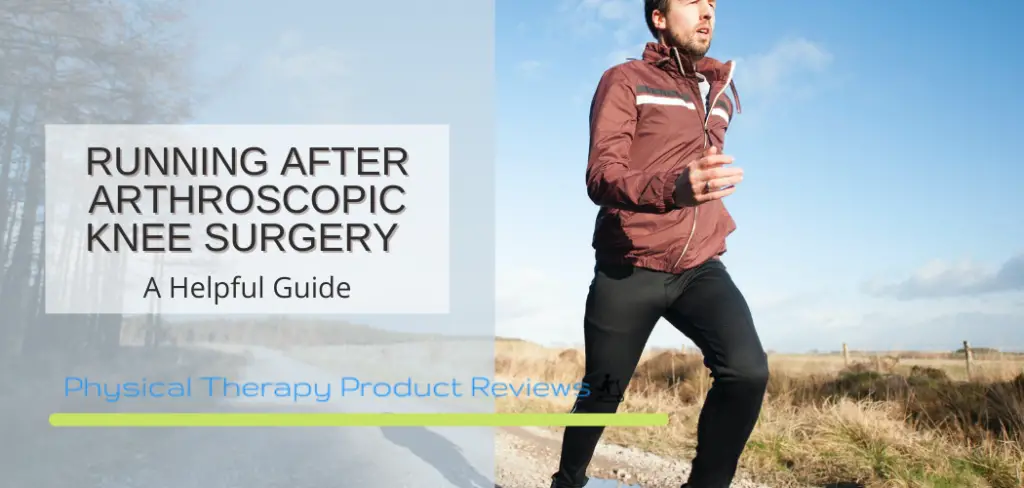 You are an avid runner and just had knee surgery. The biggest question you are probably asking yourself is, “Will I ever get back on the road running again?” This is a very common question after arthroscopic surgery.
You are an avid runner and just had knee surgery. The biggest question you are probably asking yourself is, “Will I ever get back on the road running again?” This is a very common question after arthroscopic surgery.
The simple answer to this question is: yes. But before you lace up those running shoes, there are a few things to consider.
What Exactly is Arthroscopic Knee Surgery?
 Knee arthroscopy is a surgical procedure that gives access to the knee joint without making a large incision through the skin and other soft tissues. Arthroscopy is used to diagnose and treat a wide range of knee problems. These problems can include:
Knee arthroscopy is a surgical procedure that gives access to the knee joint without making a large incision through the skin and other soft tissues. Arthroscopy is used to diagnose and treat a wide range of knee problems. These problems can include:
- a meniscus tear
- ACL tear
- cartilage damage
- removal of loose fragments
We will focus on a meniscectomy, which is the removal of a torn meniscus. This tends to be the most common surgery that runners encounter.
What is a Torn Meniscus?
 The meniscus is a piece of tissue that acts as a cushion between your two leg bones in the knee joint. There are two on each side of the knee joint. They help reduce damage to the bone caused by impact sustained during weight-bearing activities like walking and running. Sometimes you will experience a tear in one of the menisci that will cause pain and irritation in your knee.
The meniscus is a piece of tissue that acts as a cushion between your two leg bones in the knee joint. There are two on each side of the knee joint. They help reduce damage to the bone caused by impact sustained during weight-bearing activities like walking and running. Sometimes you will experience a tear in one of the menisci that will cause pain and irritation in your knee.
This may eventually decrease your ability to run as you’d like. Typically you are referred to physical therapy to address your symptoms. There your physical therapist will work to improve the strength in your hip, knee, ankle, and core to avoid excessive stress on your knee joint. If there is no change in your symptoms, they will recommend a cortisone injection to address the inflammation.
What is a Partial Meniscectomy?
If this also fails to address the pain and inflammation, you will head for a surgical consultation. They will confirm with an MRI if you have a meniscus tear. From there you will be scheduled for an arthroscopic meniscectomy. An arthroscopic meniscectomy is a minimally invasive surgical procedure used to treat a torn piece of the meniscus cartilage in the knee.
Only the torn segment of the meniscus is removed and any other fraying of the cartilage in the knee may be cleaned up. The good news is that the average time to return to your activities is 4-6 weeks.
Physical Therapy After a Knee Scope
The biggest asset in your journey to return to running will be your physical therapist. You will start physical therapy right away after surgery. Here you will regain your range of motion, mobility, strength, and balance.
Your PT will progress you over the next month to get your knee stronger. Focusing on your dynamic strength and balance will be key in your return to effective running. You will also have a focus on your hip and core strength to make sure that you have every tool ready for hitting the road again.
Returning to Running Post Meniscus Tear
Running After a Knee Scope
The next focus is on a running progression. Once you are cleared to start running you will begin with a progression to ease back into your running routine. If you start full speed and distance right away, you are likely to irritate your knee.
Typically, you will begin with a walk/run progression that consists of a 30-second jog followed by a 30-second walk. This will be repeated for 10 minutes. If you have no increase in your pain or symptoms, you can increase the total time to 15 minutes.
You can continue to increase by 5-minute increments, however, if you have an increase in your symptoms or pain then you must take a step back and train at that time frame until you no longer have pain.
When you can successfully perform a walk/run for 20 minutes without issue you can start to change the intensity of your jogging, for example, a 60-second jog followed by a 30-second walk. The good thing is that you will be able to consult with your PT about how to progress your running progression to best fit your needs.
How to Know if You Are Ready to Run After Knee Scope Surgery
The biggest indicators of whether you are ready to return to running will be your strength and balance. There are a few things you can do to test these elements yourself.

Testing your balance will consist of standing on one leg and balancing for an extended period. If this is easy, try balancing on one leg while passing a weight side to side. The ability to maintain your balance is a great indicator that your balance is on track.
To test your strength, you will want to check your hip and knee strength. Start by performing a wall sit at 90 to fatigue. The goal is to get beyond 60 seconds.
Next test your hip strength by performing a lateral step down off a box or step at home. Focus on controlling your descent and returning to the starting position. The goal is to perform 10 repetitions without pain and good form. These three tests will help you feel more confident in your return to running.
How to Keep Your Knees Healthy as a Runner
The best thing you can do for your knees as a runner is to keep them healthy. After PT you will have a home program that you will continue with. Here is where you will focus on the continued strength training of your hips and knees.
Keeping up with a balanced program will also continue to dynamically strengthen your proprioception. Incorporating core strengthening will also be beneficial as a runner. These areas will be key to helping you keep your knees healthy and keep you running.
Conclusion
Having a knee arthroscopy like a meniscectomy does not mean you have to quit running. It just means you have a post-surgical journey that will lead you back out on the road running. Physical therapy and a good home program will help keep your knee healthy. Remember, if you focus on keeping your knees healthy now, you have a much better chance of avoiding surgery altogether.
Other Great Rehab Related Articles
How to Stay Active After Cervical Fractures: Expert Tips and Advice
Dealing with Painful Stairs After Ankle Replacement Surgery
Walking After a Total Ankle Replacement: Tips for a Successful Recovery
Exercises While Non-Weight Bearing After Ankle Replacement: Elevation, AROM, Leg Raises, and More
Ankle Pain with Stairs: Causes and Home Treatment Options
5 Common Mistakes You’re Making After an Ankle Sprain
Disclaimer: The information provided in this post is for educational purposes only. This is not a substitute for a medical appointment. Please refer to your physician before starting any exercise program.






